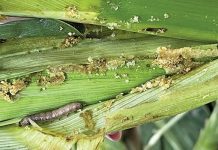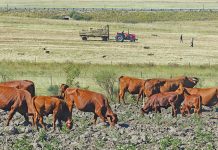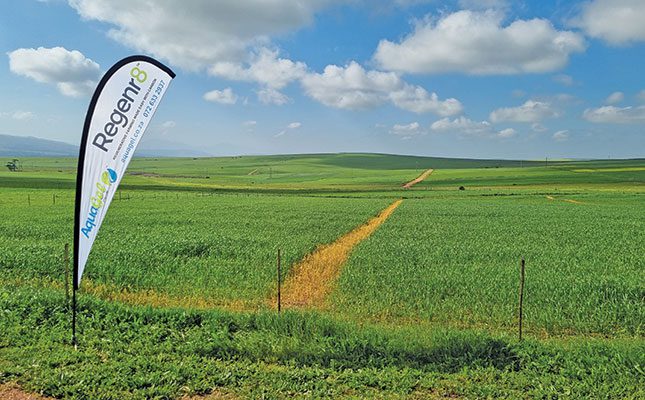
Photo: Supplied
Recently, there has been a lot of hype over the use of biochar and volcanic rock, respectively, to enhance the carbon content of soils, mitigate climate change and enhance the nutrient density of food. But what happens when you combine the two?

Clayton Postma, managing director of Aquagel (Pty) Ltd, claims that the fused combination of the two, as Aquagel has done to create Regenr8, helps to augment the impact of the individual ingredients, like when a diversity of mixed cover crops is planted together.
READ Management: the key to improving soil health
So far, the company has achieved some interesting preliminary results from pot-and-field trials that seem to suggest they are on the right track.
Trials
During the 2023 winter cereal season, the product was evaluated with wheat, in a rotation system, at the Tygerhoek Research Farm, near Caledon, in the Overberg region of the Western Cape.
A fertiliser mixture of 10kg of nitrogen, 12kg phosphates, 6kg potassium and 6kg sulphur was applied per hectare at planting in the control, whereas 10%, 20% and 30% of the fertiliser mix was replaced with Regenr8 in each of the treatments.
The control and all the treatments received a 30kg nitrogen top-up a few weeks after planting.
The control produced 3 262t/ha, whereas the first treatment where 10% of the fertiliser mixture was replaced with Regenr8 only produced 2 908t/ha.
However, a yield of 3 726t/ha was achieved in the treatment where 20% of the fertiliser was replaced with Regenr8, and 3 872t/ha in the treatment where a 30% replacement was used.
Unfortunately, results of the quality evaluation of the wheat harvested in November were not yet available at the time of writing.
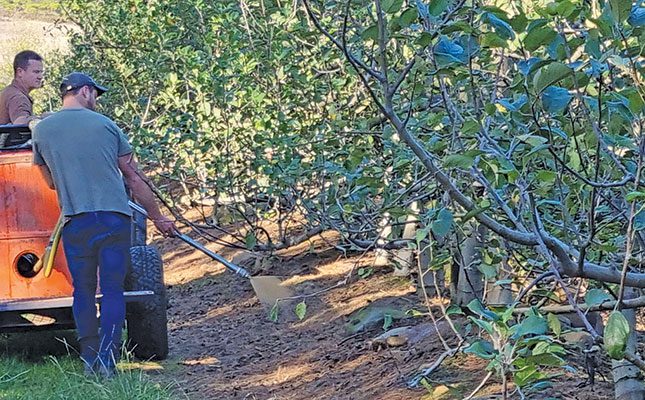
Soil samples from the control and the treatments were taken with the help of Stellenbosch University students, and submitted for full analysis by SGS Laboratories.
The results show that the 30% replacement helped to improve the carbon and organic content of the soil.
According to the results, the soil of the 30% replacement treatment had a carbon content that ranged between 1,70 and 2,06%, an organic matter content of 2,92% to 3,54% and a total nitrogen content of 0,211% and 0,177% at the end of the season.
The carbon content of the control, in contrast, ranged between 1,61% and 1,69%, while the organic matter content ranged between 2,77% and 2,91%, and the total nitrogen content ranged between 0,163% and 0,172%.
The results from the first treatment were less impressive, but still substantial, according to Postma. The carbon content ranged between 1,65% and 1,75%, whereas the organic content ranged between 2,84% and 3,01%, and the total nitrogen content ranged between 0,172% and 0,179%.
READ Soil health: crucial for future food production
For the second treatment where 20% of the fertiliser was replaced with Regenr8, however, the carbon content ranged between 1,35% and 1,32%, the organic content between 2,27% and 2,32% and the total nitrogen content between 0,138% and 0,146%.
Postma also sent soil samples from the same plots to Sporatec for microbial analysis.
According to the analysis report, there was no difference in the microbial diversity, richness and evenness in the different soil samples, indicating that the treatments had no impact, positive or negative, on the micro-organisms in the soil
The results did, however, indicate that the plot where 30% of the fertiliser was replaced with Regenr8 had a higher soil enzymatic activity.
An improvement in the glucosidase and phosphatase activity, as well as the nitrogen mineralisation potential was found, meaning that the micro-organisms that make the nutrient available to the plants were more effective with less fertiliser.
There also seemed to be a higher water content and nitrate availability in this soil, according to the analysis report.
The future
Postma says that various farmers, ranging from grains to vegetables and vineyards have started experimenting with Regenr8, on their farms, after they heard about and saw the results of the wheat trials.
Postma says that the use of Regenr8 promises to reduce chemical fertiliser use, and specifically overused nitrogen application and costs.
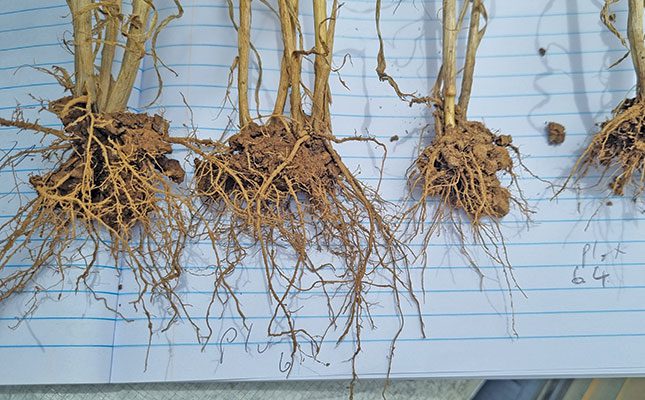
“Farmers who use Regenr8 will drastically be able to reduce nitrogen use and will probably only need to top up phosphate and potassium fertilisers, every second year, once the carbon and nutrient content of their soil are at acceptable levels.
“I also believe that the improvement of their soils will result in higher yields, and a higher nutrient denseness of food, and subsequently result in higher returns/ha,” Postma adds.
Income boost
Besides being part of a circular economy, he says that Regenr8 could also allow farmers to earn extra income by carbon sequestration and nitrogen reduction on their farms.
Dr Johann Strauss, agronomist of the Western Cape Department of Agriculture, however, warns that people should not get too excited about the results yet.
“The trials have to be repeated for at least another two seasons, and at different places, to ensure the results were not a once-off effect,” he says.
Email Clayton Postma at [email protected].





